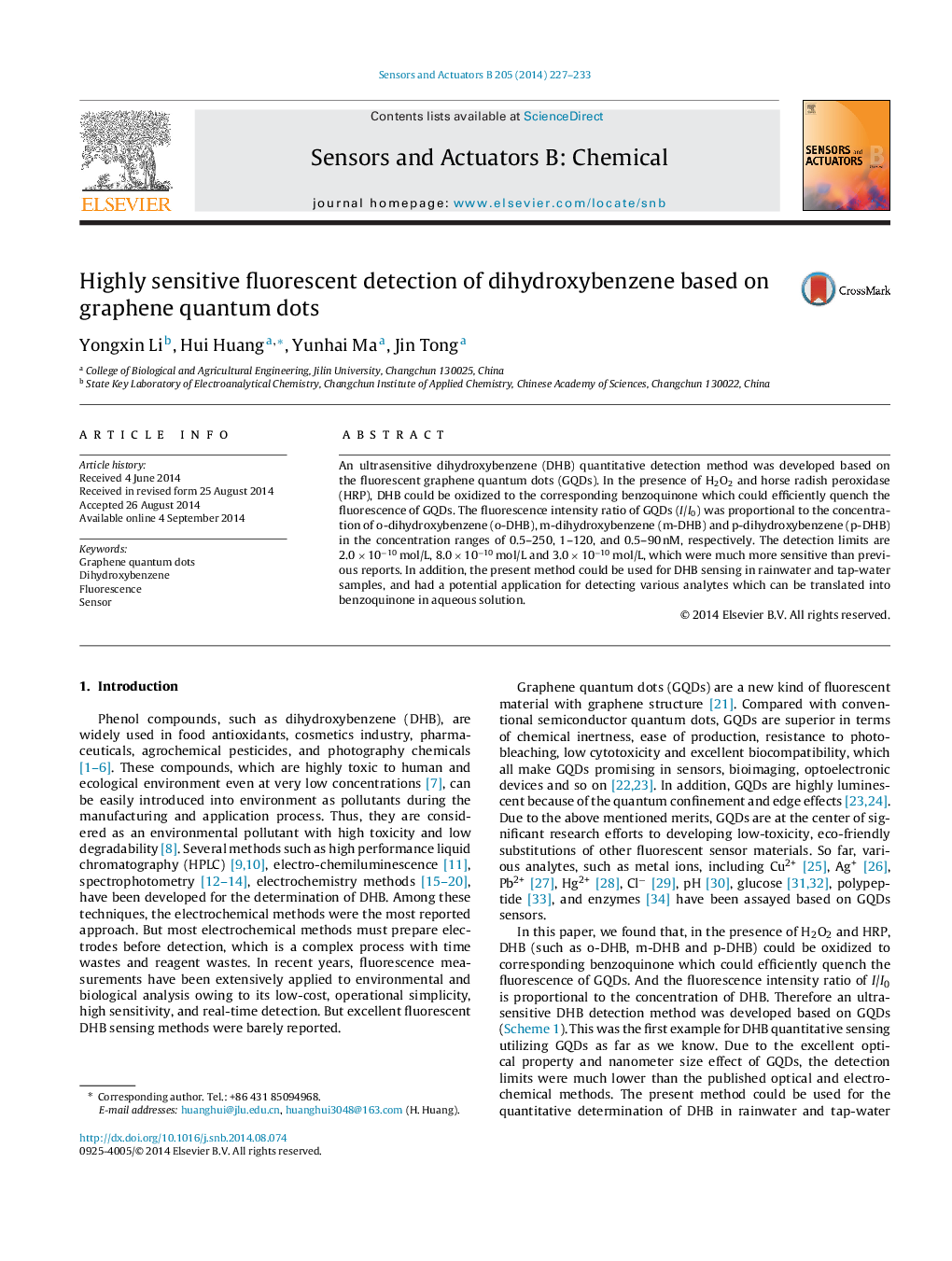| Article ID | Journal | Published Year | Pages | File Type |
|---|---|---|---|---|
| 739896 | Sensors and Actuators B: Chemical | 2014 | 7 Pages |
An ultrasensitive dihydroxybenzene (DHB) quantitative detection method was developed based on the fluorescent graphene quantum dots (GQDs). In the presence of H2O2 and horse radish peroxidase (HRP), DHB could be oxidized to the corresponding benzoquinone which could efficiently quench the fluorescence of GQDs. The fluorescence intensity ratio of GQDs (I/I0) was proportional to the concentration of o-dihydroxybenzene (o-DHB), m-dihydroxybenzene (m-DHB) and p-dihydroxybenzene (p-DHB) in the concentration ranges of 0.5–250, 1–120, and 0.5–90 nM, respectively. The detection limits are 2.0 × 10−10 mol/L, 8.0 × 10−10 mol/L and 3.0 × 10−10 mol/L, which were much more sensitive than previous reports. In addition, the present method could be used for DHB sensing in rainwater and tap-water samples, and had a potential application for detecting various analytes which can be translated into benzoquinone in aqueous solution.
